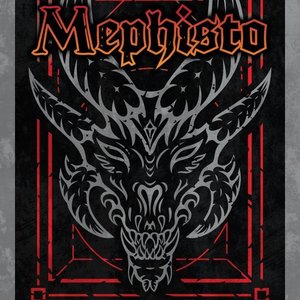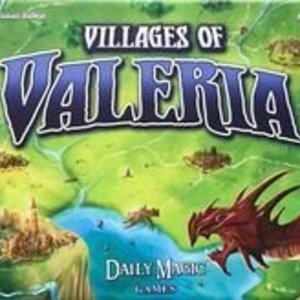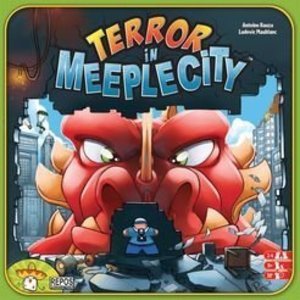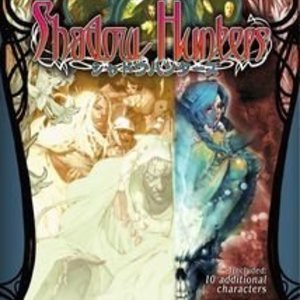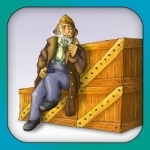
Le Havre (The Harbor)
Entertainment and Games
App
In this universal adaptation of the popular board game (winner of a 2009 International Gamers Award,...
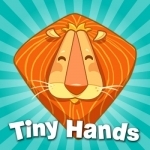
Kids preschool & kindergarten learning games free
Games and Education
App
** Fun EDUCATIONAL game for toddlers of AGE 3.5 and up ** Developed with certified child...
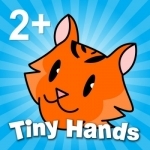
Lotto baby toddler kids games for girls boys free
Education and Games
App
*** Fun educational game for toddlers of age 1.5 and up *** English voice over – Learn first...
Purple Phoenix Games (2266 KP) rated Mephisto: The Card Game in Tabletop Games
Jun 18, 2019 (Updated Jun 21, 2019)
DISCLAIMER: I am not intending to cover every rule in the rulebook (well, rule cards), but to give you an idea of how the game plays. -T
Mephisto is a card drafting, hand management game (with a dash of take-that) played using a grid of cards to be affected and manipulated… LIKE YOUR SOUL!! Setup is easy for a multiplayer game. Deal a hand of cards to each player, setup the main 3 x 3 grid of cards in the middle of the table with the draw deck in the center, and two corners (making a diagonal line) having random placeholder cards face-down to be unavailable for play. The reasoning is simple: where you sit at the table determines in which lane, like in bowling, you can play your cards to (if you have ever played the Adventure Time Card Wars game you will instantly be familiar) and you only have access to two cards in each lane.
You will be using your hand of cards to gain favor from Mephistopheles, to fight and kill monsters to reap their souls, to gain cards from the grid, and to activate items or spell cards for their abilities. Many cards can combo together, and several cards are multipurpose/multi-use cards that can decay every time you use them, so you must take care not to allow your powerful weapons to lose all durability before you can maximize their effectiveness. The first player to amass a total of 12 souls will gain the ultimate wish from Mephistopheles: infinite power!
Components: This game consists of a deck of cards, which are of great quality. I believe this was an earlier-than-originally-expected Kickstarter fulfillment due to switching manufacturers to an American-based company, so we Americans were able to enjoy the game sooner as a result. In any case, the cards are great. What I love about the components is the art. The art on the cards are really really cool. I love the art style employed here, and the explosive neon color scheme used. What I really wished had happened was that the colors would be alluded to on the box cover as well. Honestly, if I had never heard of this game and saw the dark dark colors and occultish logo on the box I probably would have passed it up as “not for me.” But, playing the game is much more enjoyable with a fresh and vibrant set of cards.
I made a comparison to Adventure Time Card Wars in referencing how the lanes worked in play. And honestly, the game kinda feels like ATCW with a different skin. There is some take-that, some moving cards into different lanes, and affecting different cards in the grid. Now, I am an Adventure Time fan, but I just could not get into that game. Mephisto feels familiar in that… lane… but I must like the theme more, because I would rather play Mephisto over ATCW. If you haven’t played a game using lanes like this and don’t mind a darker theme I say give it a shot. It’s small (deck of playing cards size), portable, inexpensive, and a pretty good game. Purple Phoenix Games, with guest Tony, give this one a darkened 15 / 24.
Purple Phoenix Games (2266 KP) rated Villages of Valeria in Tabletop Games
Jun 12, 2019
In VoV you are a Duke/Duchess being charged by the King to found a new Capital City to replace the previous one that has been ravaged by the wars played out in VCK. The King has assigned you a castle to use as your HQ and expects the most enterprising Duke/Duchess to win the day by building the most flourishing village. Will you be able to create the resources necessary to build the most attractive buildings that adventurers will want to frequent? Or will you spend your time taxing your constituents to death?
DISCLAIMER: This review focuses on vanilla Villages of Valeria. We have all the released expansions and may do a review of them in the future. If we do, we will edit this review or link to the new review here. -T
VoV uses a handful of really great game mechanics that will be familiar to some gamers, but not intimidating enough to scare off new gamers, that really work well together to create an excellent gaming experience. I will address most of them here, but please do not use this review as a replacement for the rulebook, as I will not be addressing every single rule.
VoV is played over several rounds where every player will be taking a turn as the active player until someone has built the requisite number of buildings prescribed in the rulebook to trigger the end of the game. Each player starts with a castle card that provides a wild resource of your choice when you need to pay resources to build buildings on future turns. You are also given gold and a starting hand of cards in accordance with setup rules. Setup the decks of cards and create the offer rows for each and you are ready to play!
When you are the active player you will take an action from a list of five available actions: Harvest, Develop, Build, Recruit, and Tax. If you choose to Harvest on your turn you will draw three cards from either the face-up green building cards on the offer or blindly from the deck of green building cards. To Develop you will play a building card from your hand to the back of your castle, tucked underneath and upside down, to be used as the resources printed at the bottom of the card (wood, magic, stone, food). These resources are now available to be used for the build action (think of the brown and gray cards in 7 Wonders, if you’re familiar). When you take the Build action, you will be playing a building card from your hand to be built in the tableau in front of you. Since number of buildings is the end game trigger condition, you will be trying to build buildings as much as possible. All building cards have a cost printed on the left side of the card, and those costs will need to be paid for by using the gold you possess. You can use one gold on your own castle card as it provides a wild resource to you, and you can use one gold per card you have Developed previously for their resource benefit. You may even spend your gold to use an opponent’s resources (not their castle! – also akin to 7 Wonders neighbor resource purchasing). The catch here is that you lose that gold piece to your opponent, but they will not be able to use that resource until the beginning of their turn as active player. Most buildings will have benefits printed on them that either take effect immediately or when triggered by another action. When you Recruit an Adventurer, you are using your village’s buildings to attract them to your cause. Each Adventurer’s cost to recruit is printed on the side of the card, and these costs are paid by having the matching symbols on building cards in your village. Once recruited, these Adventurers can also enact conditional abilities similar to building cards, but usually will be advantages to final VP scores. By taking the Tax action you will take one gold from the bank and draw a building card from the offer or the deck.
Now this all seems pretty easy and I have only really mentioned one form of tension by blocking opponents’ use of their own resources if you spend a gold to use it on your turn. Since you reclaim all gold on your castle and resource cards in your village at the beginning of your turn this should cause no problems, right? Well, VoV also uses the follow mechanic that has been employed by other games previously. When you are the active player you choose which action you want to take on your turn, complete that action, and then the same action is offered to your opponents for them to take at a disadvantage. Example: I choose Tax as my action, so I take my gold and my card and my turn is over. Then, going around the table, each player can decide to follow my action but are only able to take a building card as a follow action. No gold. Each action has a Lead and Follow benefit, so you are always paying attention during the game, even on others’ turns because you might still benefit from the chosen actions.
Play continues like this with active player Lead actions and possible others’ Follow actions until someone triggers the end game condition. Then everyone completes the turn and VPs from all cards in your tableau are added (including gold pieces you collected). Most VPs wins the game of Villages of Valeria!
Components. Okay, I have to admit that I have the Kickstarter Deluxe version of this game so I am only speaking from experience with that version. The cards are of really good quality. The gold tokens and active player castle token are great, but the action tracker we found a bit cumbersome to use so we just, like, didn’t. The building tracker and castleeples are great as well. The art is by The Mico, and I just love his art style, so that’s a big positive for me. Overall, the components are really really nice.
So why do I love this game? Well, it’s really a mashup of mechanics that work well for me. I love the Lead/Follow mechanic. I love 7 Wonders, so borrowing some of those mechanics and nuances is a great fit for me. I absolutely LOVE The Mico’s artwork on every Valeria game. No two games of VoV will be alike because the amount of cards that come inside the box (and growing with every expansion) gives such a diverse gaming experience that I love playing. If you like any of the Valeria games and you have yet to try Villages of Valeria you MUST find a copy. You will be drawn in by the familiar feel of Valeria and mechanics from classic games that will surely delight. We at Purple Phoenix Games give this gem a bustling 20 / 24. Long live Valeria!
https://purplephoenixgames.wordpress.com/2019/04/05/villages-of-valeria-review/
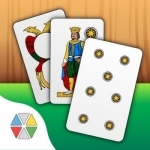
Scopa: la Sfida
Games
App
Challenge your friends now at Scopa: La Sfida, the only one with SCOPONE SCIENTIFICO mode! Download...
Purple Phoenix Games (2266 KP) rated Terror in Meeple City in Tabletop Games
Aug 6, 2019 (Updated Sep 23, 2021)
Terror in Meeple City is a dexterity game of area movement and set collection in which players are trying to amass the most end-game Victory Points by devouring meeples, collecting building tiles, teeth, and by successfully completing their Character cards. To begin, setup the board as described in the rulebook, constructing buildings and placing meeples and vehicles accordingly. Each player receives a screen, Body (monster), and Paws (disc) in their chosen color, placing the Paws on the starting area closest to them. Players receive 4 Teeth tokens and are dealt a Character card, Power card, and Secret Superpower card. The Character and Power cards are visible to all players, and are permanent throughout the game – providing special abilities or scoring conditions for the end of the game. The Secret Superpower card is secret (duh) and revealed only when you are ready to use it – it is a one-time use in the game, and then discarded. Select a starting player, and the game is ready to begin!
On your turn, you will perform 2 of the following actions: Move, Demolish, Toss a Vehicle, or Breathe. You can perform the same action twice on your turn if you want! To Move, you will first take the Body of your monster off of the Paws disc. Using your finger, you will flick the Paws disc on the board, hopefully to end up where you wanted it! After a successful flick, put your Body back on the Paws. To Demolish, your Paws must be touching the sidewalk surrounding one of the buildings in the city. If that is the case, you can try to demolish that building – by picking up your Body, holding it over the appropriate building, and dropping it! In order to Toss a Vehicle, your monster must be located in the same neighborhood (area of the board) as a vehicle. Pick up the chosen vehicle, place it on top of your monster, and flick it! And finally, you can Breathe – place your chin on top of your monster, inhale, and then blow as hard as you can. While performing these actions, there may be some collateral damage, that could be beneficial or detrimental to you! If you knock down another monster on your turn, collect one of their Teeth and put it behind your screen. If after your action, there is a building tile with nothing on it (meeples, monsters, etc.) then you collect that tile behind your screen as well.
Once you have taken your 2 actions, it is time to Chow Down – eat as many accessible meeples in your same neighborhood as you have Teeth tokens left. Devoured meeples go into your stomach (behind the player screen). If at any point during your turn, any meeples end up fleeing the city (knocked off the board), they will be added, in order, to the Runaway Meeple board. Once a line on this board is filled, the active player suffers the negative consequence – so be careful not to scare off too many yummy meeple morsels! The game continues in this fashion until it ends in one of two ways. Either the last building tile is collected, everyone takes one last turn, and then VP are tallied. Or the final line of the Runaway Meeple board is filled, causing the player who filled it to lose, while everyone else counts up their VP. VP are earned for any Teeth collected, building tiles consumed, sets of meeples devoured, and any points earned from your Character card. The player with the most VP is the winner and is the greatest monster of the game!
So I know that sounds kind of chaotic – and at times it can be. But it is a light-hearted and silly game that engages all involved. The simplicity of the mechanics (flicking/blowing) are countered by the strategy required for success. Yes, by all means, go on a crazy rampage – but the goal is end-game VP, so how can you use all these moving components to your advantage? The strategy is there, with enough luck/randomness from a dexterity stand-point that it keeps the gameplay interesting. And it is just plain fun to play! Getting up to move around the board for a better angle, knocking over opponents accidentally (or on purpose!), and sending components flying across the board makes for an entertaining and engaging game. That being said, unless you are incredibly dextrous and can perfectly execute your desired actions, be prepared for some frustration when you whiff big on a flick.
Let’s talk components for a minute. They are pretty good in this game! The board and cardboard building tiles are all pretty sturdy, which is really necessary in a game where the components can take quite a beating. The wooden meeples and monster parts are thick and high quality as well! I take great pride in keeping my games in good condition, and even this one has withstood the test of time and plays. So, good production quality all around, if you ask me!
Is Terror in Meeple City my favorite game? No. But it’s one that I’m glad to have in my collection. It works well in so many situations – a gateway game, a light-hearted filler game, a game to get everyone up and moving, and a game that can be played with younger gamers as well. Although it’s not really a brain-burner or a game of high-level strategy, it’s one that still makes for a good time. Purple Phoenix Games gives it a 7 / 12. Give it a try if you’re itching to smash some stuff!
Purple Phoenix Games (2266 KP) rated Shadow Hunters in Tabletop Games
Jul 24, 2021
Shadow Hunters is a hidden identity survival card game for groups of 4-8 players. Each player’s drawn persona will belong to the Shadows, the Hunters, or Neutrals (common bystanders). The goals of the players may all be completely different and the game may end at any time due to fulfilling personal agendas. Players may even win when their characters are dead!
To setup place the board on the table and randomly populate the card spaces on the board with the Area Cards. Shuffle the White Cards, Black Cards, and Hermit Cards (why didn’t they just name these the Green Cards?) into their own stacks and place them on the side of the board in their slots. Players choose their preferred colors, take the boards and pieces with that color, and place one of their wooden markers on the No Damage space on the board. The other wooden marker will be used for movement on the board Area cards. Shuffle and deal each player one Character Card to be kept secret from the other players. Determine start player and the game is ready to begin!
On a player’s turn they will be completing at least one task and then possible other tasks. First, the active player will roll both the 1d6 and 1d4 together to arrive at a number between two and 10. The player will place their marker on the matching Area card on the board. Should a player roll a seven they may choose any location other than the space they are on and move. Each location will have an action printed on its card that a player may choose to complete. These could be drawing cards from the White, Black, or Hermit decks, damaging other players, or stealing equipment cards from them. Lastly, the active player may straight up attack another player within the same Area range (the three different areas are two cards linked together, so either the card the marker shares or the one that is linked).
As soon as a character has suffered damage equal to or greater than the HP shown on their Character Card, that character dies. Once a character dies, the owning player flips the Character Card over to reveal the character and, more importantly, their faction to which they belong. If this causes one player to fulfill their character’s goals, they must announce that the game is over. If not, play continues in this fashion until a player’s goal has been achieved to end the game. This could mean the Shadow team or Hunter team wins as a group, or that one player wins alone.
Components. Oddly, this edition of Shadow Hunters is now almost 10 years old, so it fall within the “older games” group. That said, the components are still excellent quality, even by today’s standards. The cards have a faint linen finish, the cardboard components are all thick and matte finished, the wooden player markers are chunky and fun to move around. The only issues I have with components are that I wish the colors matched more on the wooden markers and the player boards. Not a huge deal, but something that makes me cringe just a little inside. The other issue I have is most definitely a personal preference: the numbers on the d4 are on the bottom and I prefer them on the top. I know, purely personal preference and I’m dumb for even mentioning it.
This is a game I love but irks my wife. And not even because she doesn’t like the game. It irks her because of how I play it. Until I use the Hermit Cards to try to help figure out which player is on my team I will certainly be attacking everyone I can every chance I get. That’s not the best way to make friends, and I get it, but I’m not taking that chance of allowing a potential opponent to get a leg up on me. That bothers my wife because many times I’m attacking my teammates. Oh well.
I have played this game so many times with different groups and have had great success with it almost every single time. It’s an easy teach, the theme makes sense, and having different end goals is something that many people can rally behind. I know there are about 3,000 hidden identity games out there, but I consider this one of the best. Even 10 years later it sill holds that sheen and gives us a little different experience than just spamming The Resistance: Avalon every time. Purple Phoenix Games gives this one a hot 17 / 24. Pick this one up if you find it in the wild and want a different feel for your hidden identity collection. I love it and you might too.
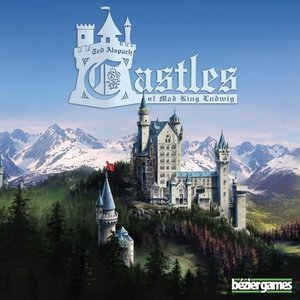
Castles of Mad King Ludwig
Tabletop Game
In the tile-laying game Castles of Mad King Ludwig, players are tasked with building an amazing,...
BoardGame
Margaret A. Young (1 KP) rated Bears vs Babies in Tabletop Games
Nov 3, 2018 (Updated Nov 3, 2018)
We bought Bears vs. Babies because my sons loved Exploding Kittens which was created by the same people. While being a completely different game, I think this would appeal to anyone who enjoyed Exploding Kittens.
Bears vs Babies comes packaged in a sturdy box which is covered with fake fur. Although this is attractive, we bought a separate case for travel as the box it comes in is a bit bulky for camping and scouting trips, does not lock closed and the fur would get dirty quite easily. However, if you simply want it to keep it on a shelf it is fine, and the unique box does seem nice for a gift item.
Inside the box is the deck of cards, a rule book, another book of frequently asked questions, which I fact contains more rules, and a cloth playing mat. The frequently asked questions book says that you don't need to read it, but you really do. It shouldn't take more than a couple of minutes to read both, so do yourself a favour and have a quick read before starting the game.
This game has been played by my sons and their friends, ranging in ages from 8 - 13. This game is recommended for ages 10+, but I think it could be played with children as young as six with minor assistance, and my youngest was 9 when we got this.
Although the game is called Bears vs Babies, there is really only one bear unless you count a water bear, which isn't a bear at all. I think Beasts vs Babies would be a more accurate name. Some of the beasts you can make include a Grizzly Bear, a Llama, a Velociraptor, a Manatee and an undead looking rabbit. Or at least you can create creatures which look like a sin against nature with these heads. You collect and play other cards to add a body, legs, arms and accessories to your monsters, trying to get as many points as possible. The monsters are pitted against babies whose also look like abominations, though this is clearly intentional.
Game play is pretty simple. You are allowed to actions per turn. So you can add parts to your monsters, play an action card, draw cards or provoke babies. Babies and monsters are divided into three categories, land, sea and air. When a baby is provoked, all the babies of that category attack all monsters of the same category on the table. The one with the most points wins.
As with any game, we add a few personal twists to it. Instead of just calling provoke to start a battle with babies, you can make each player come up with a unique way to provoke them... energy drink in the baby bottles, hide their teddy bears, and so on. Adding sound effects for the winning monster can add to the fun as well.
While I wouldn't say this is game that can keep children or teens entertained for hours, it is something that is chosen regularly, by both my own children and visitors. A round of the game can take perhaps 20 minutes and this is usually played once in a session before moving on to another game. To be fair, the boys do say they prefer Exploding Kittens, And Exploding Kittens does get played more frequently, but this is still a very welcome addition to our games collection and I am well pleased with our purchase.
